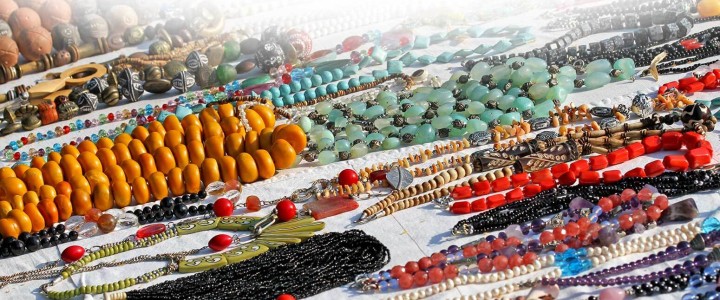Just as the orixas (“orishas”) are an integral part of the Candomble religion of Salvador da Bahia, Brazil, so, too are the colourful bead necklaces of the practitioners.
In many religions, certain items have specific spiritual meaning. It is no different with Candomble. The bead necklaces that are commonly worn are considered an outward manifestation of their orishas. Whenever these beads are consecrated, either by blood sacrifice or are run through a sacred herbal bath, the necklace shares in what’s called the axe’ (“ah-shay”), or the spiritual force that permeates everything.
But it’s not just the beads themselves that mean something when consecrated. When devotees learn of their guiding orishas, they will wear necklaces representing the orisha or orishas that guide them, the beads in the same colours as that particular orisha.
Additionally, when the beads become consecrated, and with the proper offering, the beads don’t just represent the divine spirits, they become those spirits, just as the Candomble practitioners become possessed of their orishas while dancing.
This sort of consecrated empowerment allows the necklaces to be protective talismans for the wearer, but they can also harm the owner. This emphasises the level of responsibility required just by owning the beads. In short, blessed and consecrated bead necklaces require a level of devotion and solemnity that ordinary jewelry does not.
The Colours of the Beads
As mentioned before, each orisha is said to choose its devotee, and passes power to that chosen person, finding a way to communicate that this is the spirit belonging to that particular individual, that that individual has the right, the power to wear the specific colour of beads, and is in the right state of mind and heart to worship and make offerings.
Each colour range, such as greens, blues, whites, yellows, reds, black and so on, belongs to an aspect of nature, of the natural force of things, emphasising Candomble’s focus on seeking to harmonise and blend with nature, the Orishas embodying and representing the powers of the wind, sun, earth, fire and water.
So to the casual onlooker, the multiple strands of coloured beads made of clay, glass and perhaps plastic are just that: multiple strands of beads. But to the Candomble practitioner who is forever devoted to their orisha, the strands of consecrated colours are much more than ordinary strands. They are a connection to their spirituality, to the earth, to the orishas themselves.

